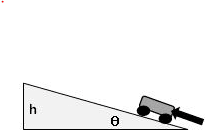Geography 2010A/B Study Guide - Quiz Guide: Arctic Fox, Subshrub, Biome
Document Summary
Tundra vegetation varies considerably in structure and species composition. Generally, as the environment becomes more extreme, the productivity declines, resulting in lower vegetation biomass, lower canopy, and reduced density of plants. Highly localized conditions related to soil type, availability of moisture and microclimate may affect the specific community. Results in a patchy cover in may areas where growth conditions vary substantially. Tundra vegetation is characterized by cold winter conditions, cool to cold summers. The brief growing season results in plant-specific strategies for growth and reproduction. This may include rapid seed development, altered growth habit to maximize photosynthesis and infrequent seed production. Shrub tundra is found in southern margins and is characterized by extensive cover of shrubs up to 1 m height. Many of the shrubs are dwarf varieties of alder, birch and spruce species, although taller individuals may sporadically occur. Generally, this is a wetter biome and relatively productive. Tussock and dwarf shrub tundra is found in middle arctic regions.


